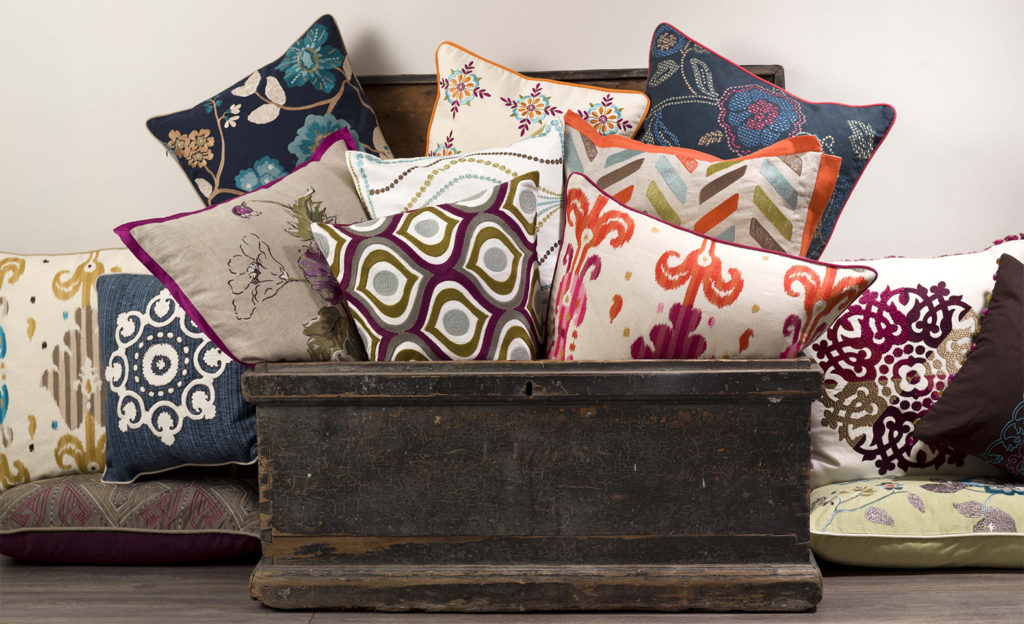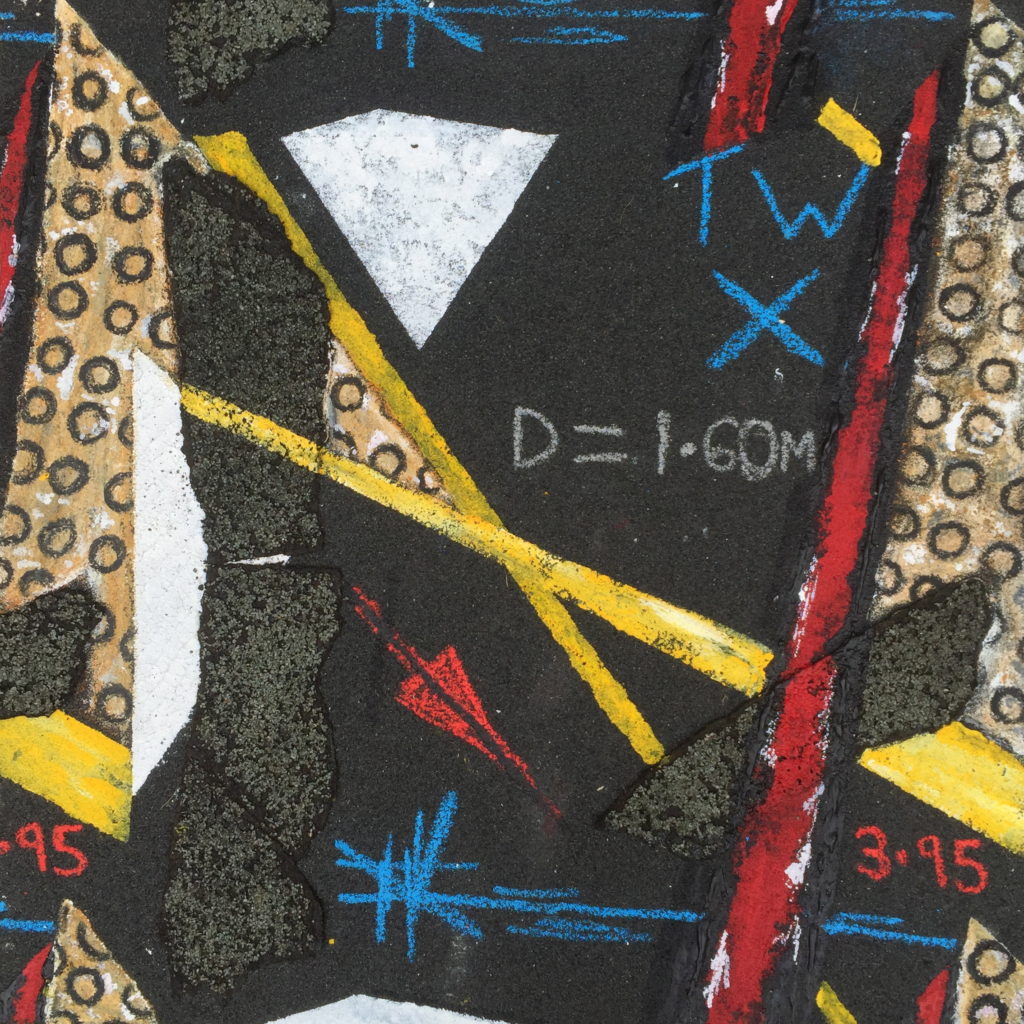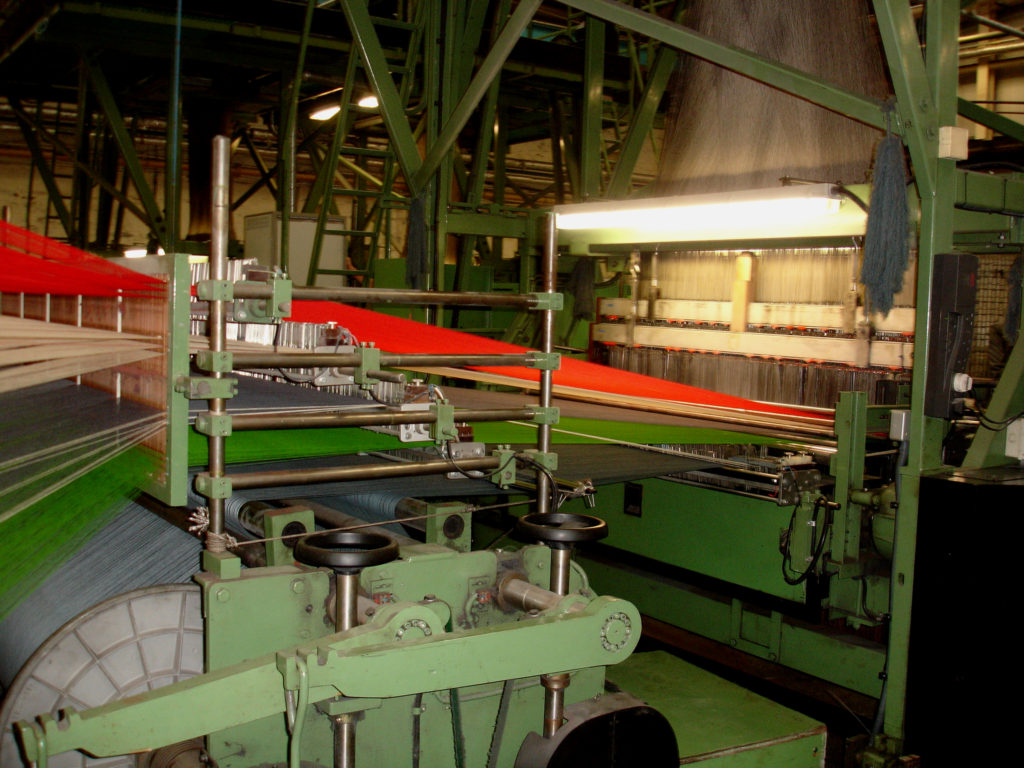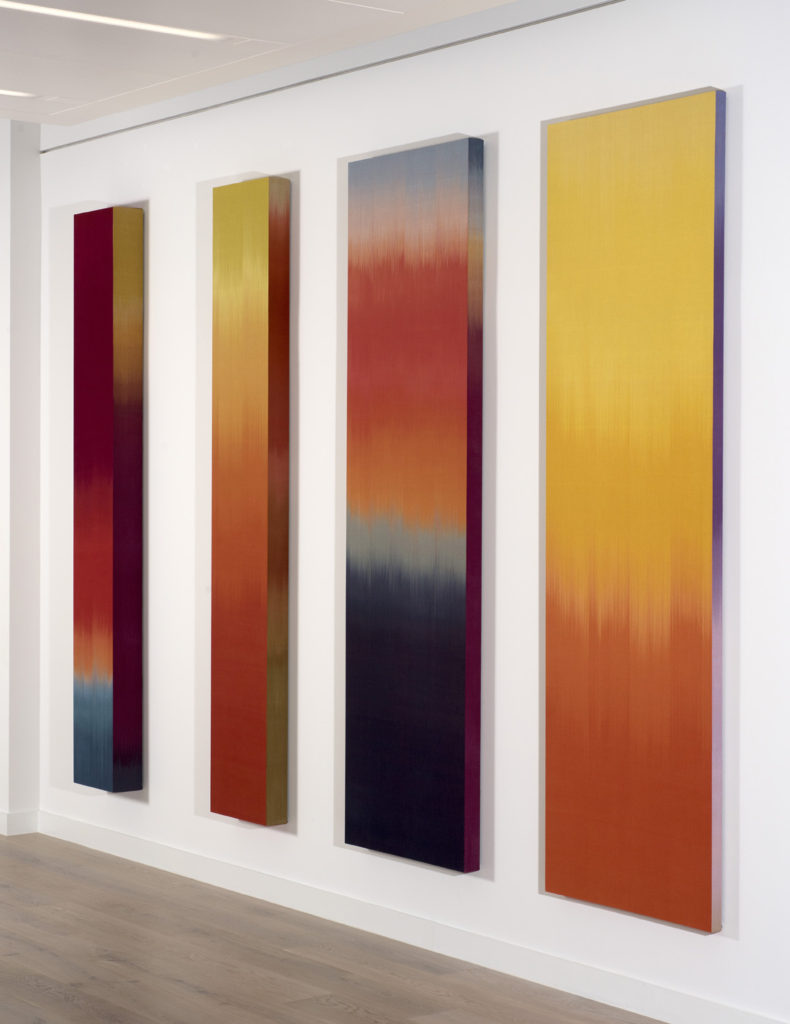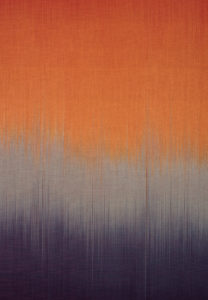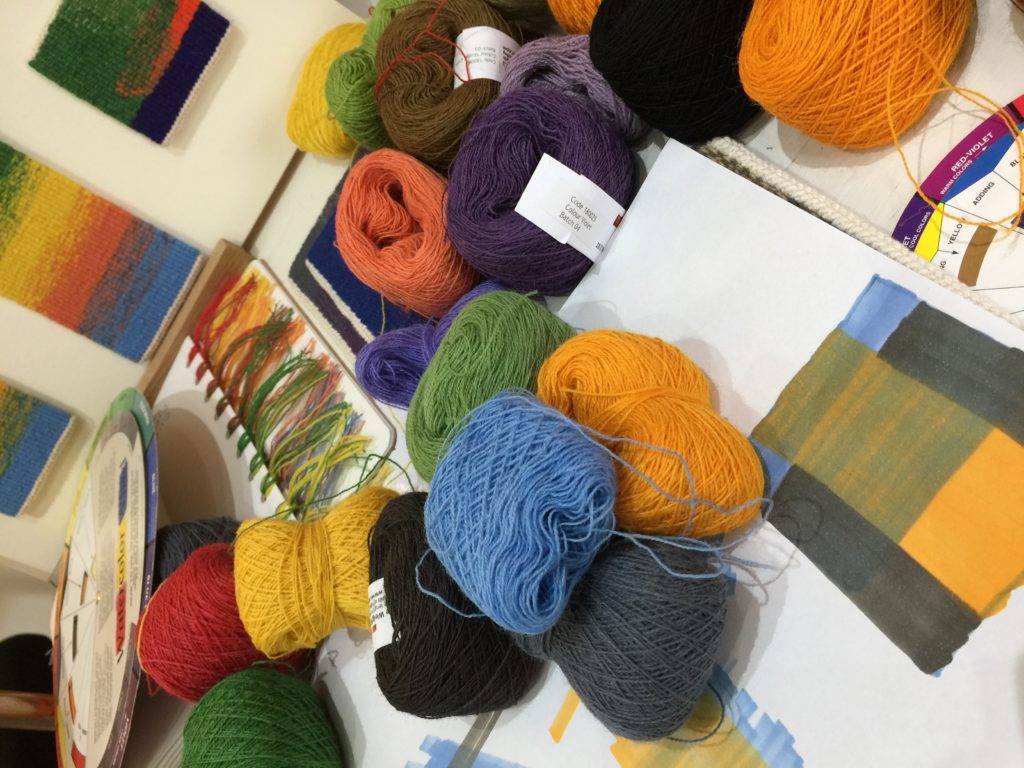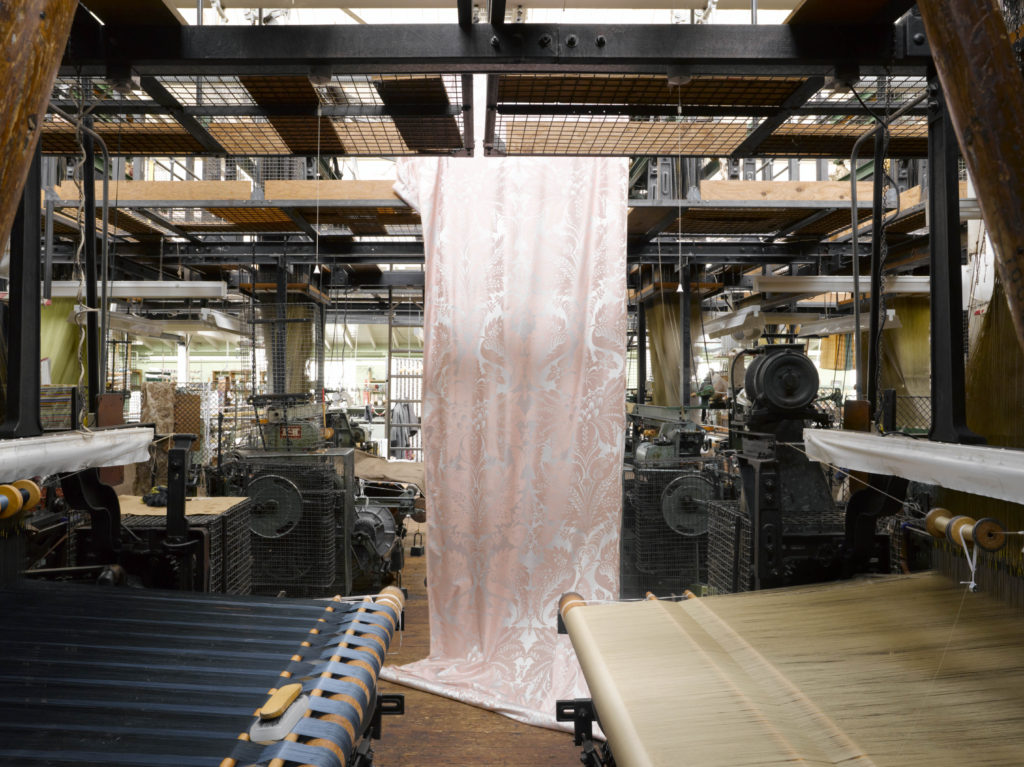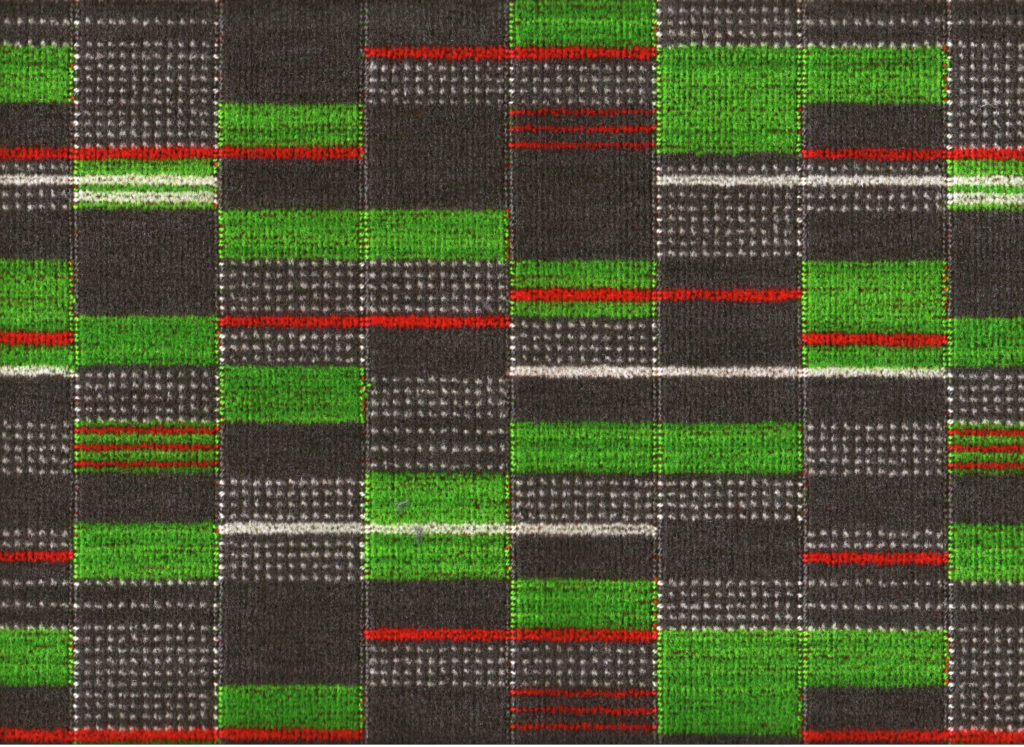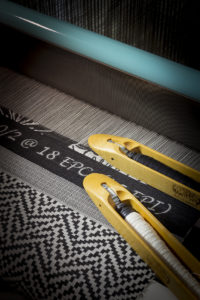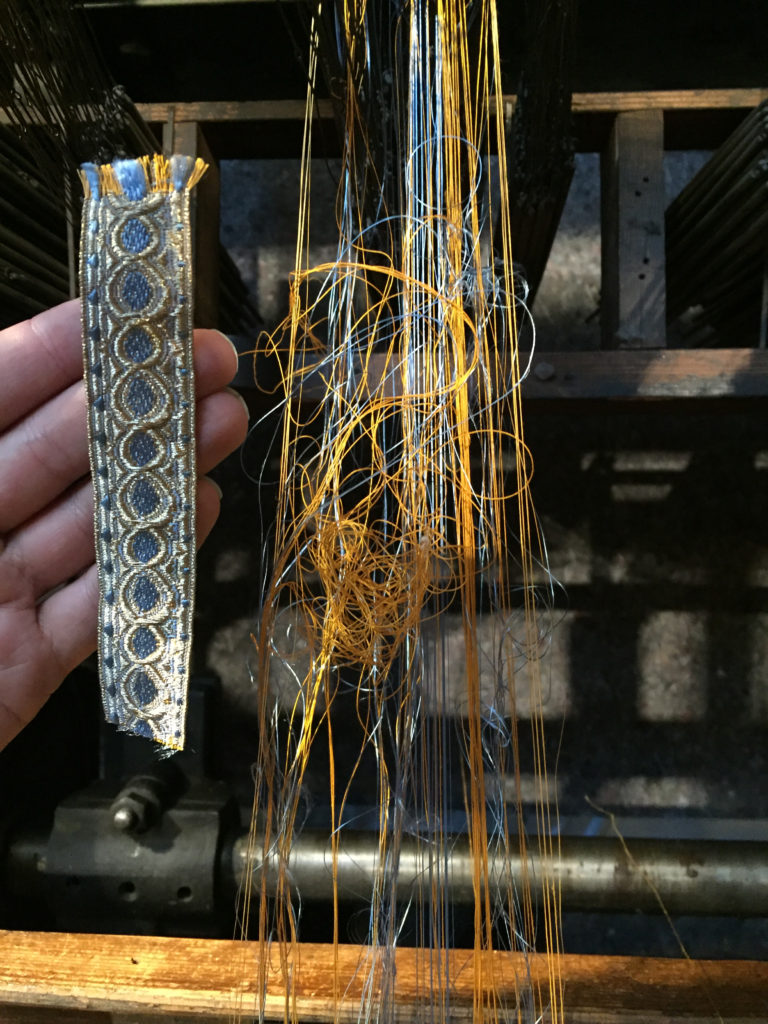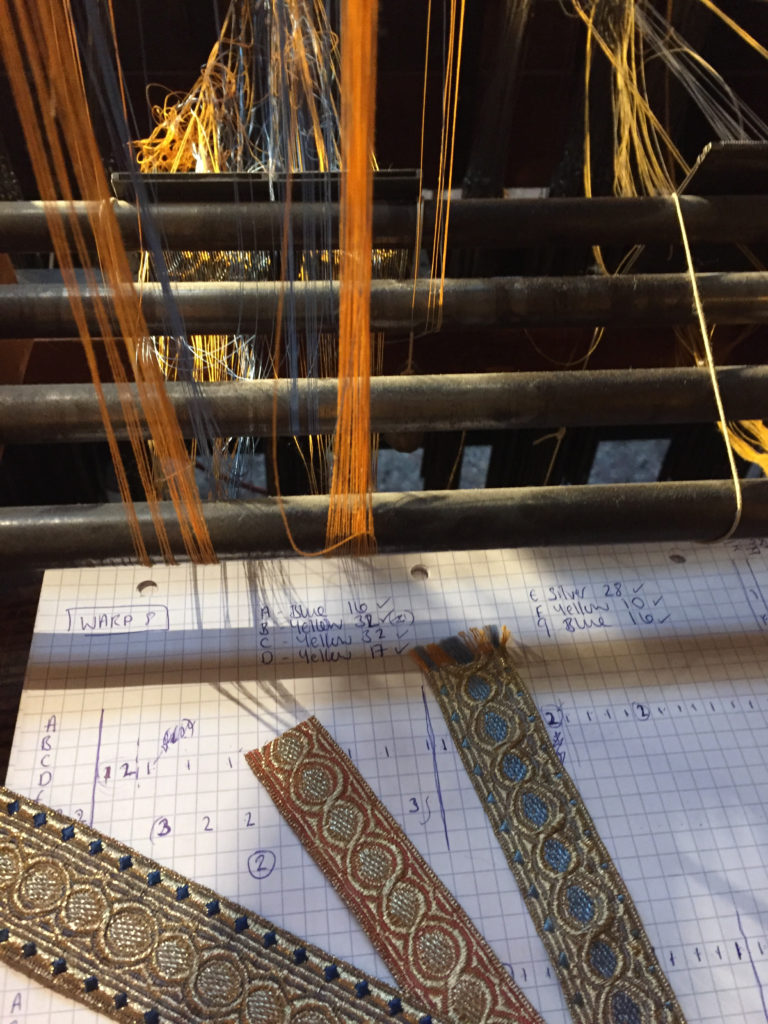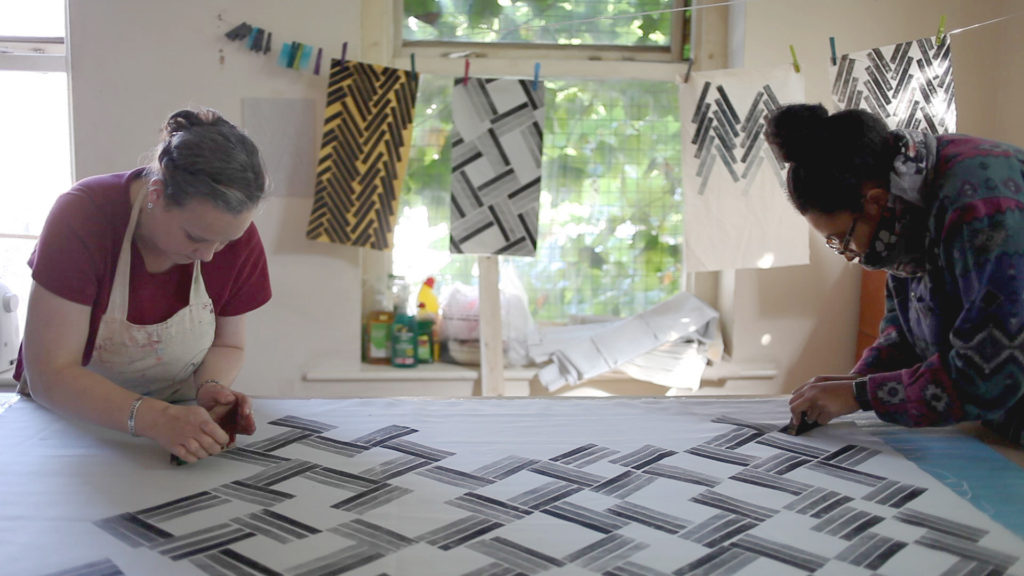 Weaving Futures is an exhibition at London Transport Museum highlighting the importance of woven textile design to the London Transport system. The exhibition explores the process and making of digital woven textiles, as part of the Museums’, Designology season.
Weaving Futures is an exhibition at London Transport Museum highlighting the importance of woven textile design to the London Transport system. The exhibition explores the process and making of digital woven textiles, as part of the Museums’, Designology season.
Each week, visitors will be able to see invited designers/artists in residence in the Designology studio, who will be working on a project brief and interacting with a weaver in their residency dates. The weavers will be interpreting the residents work live into digital woven textile prototypes and final works on a state-of-the-art TC2 digital jacquard loom.Â
Week 3 features: Assemble
Residency dates: 4th – 8th Dec 2016
Activity days: 6th & 8th Dec 2016
Assemble are a collective based in London who work across the fields of art, architecture and design. They began working together in 2010 and are comprised of 20 members. Assemble champion a working practice that is interdependent and collaborative, seeking to actively involve the public as both participant and collaborator in the on-going realisation of the work.
In 2015 Assemble won The Turner Prize for their project Granby Workshop that makes experimental, handmade products for homes. It was set up as part of the community-led rebuilding of a Liverpool neighbourhood, following years of dereliction and institutional neglect.
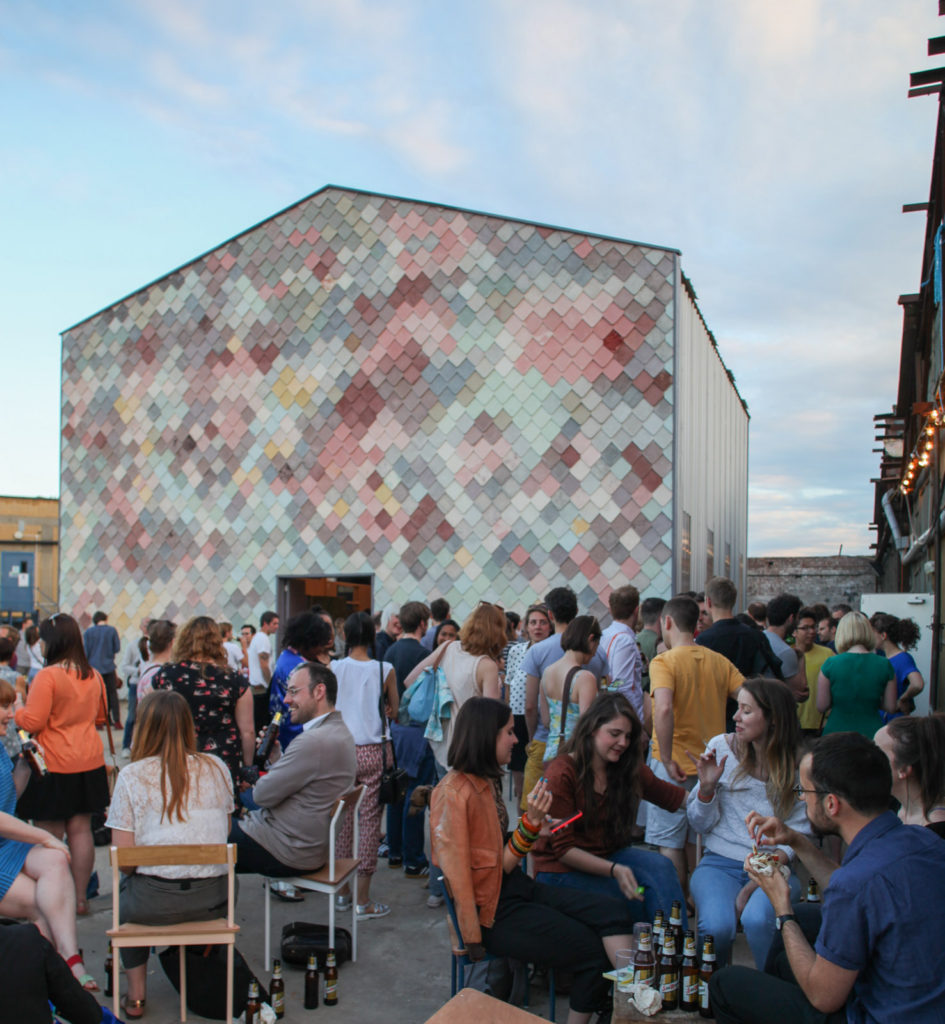 Maria Lisogorskaya, Jane Hall and Paloma Strelitz from Assemble will be the residents in Weaving Futures. Continue reading →
Maria Lisogorskaya, Jane Hall and Paloma Strelitz from Assemble will be the residents in Weaving Futures. Continue reading →

